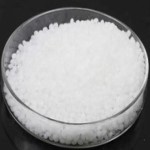Polyvinyl Acetate SDS of Suppliers Exporters, Manufacturers
Polyvinyl Acetate
CAS Number: 9003-20-7 USP NF BP Ph Eur FCC Food Grade Suppliers Exporters, Manufacturers

Please visit Main Page of Polyvinyl Acetate USP NF BP Ph Eur FCC Food Grade Manufacturers.
Polyvinyl Acetate SDS, Safety Data Sheet
MSDS Sheet 11-May-22
1. PRODUCT DESCRIPTION
Product Name & Other Names: Polyvinyl acetate, Vinyl acetate polymer
CAS Number: 9003-20-7
EINECS EC Number: NA
Relevant uses and uses advised against (if any): Industrial Manufacturing.
Suppliers: As per letterhead.
2. HAZARD IDENTIFICATION
GHS, Globally Harmonized System Classification in accordance with 29 CFR 1910
Classification according to Regulation (EC) No 1272/2008
Not a hazardous substance or mixture according to Regulation (EC) No. 1272/2008.
This substance is not classified as dangerous according to Directive 67/548/EEC.
Labeling according to GHS & Regulation (EC) No 1272/2008
GHS Label Elements None |
Signal Words: None
Precautionary statements:
P261: Avoid breathing dust/fume/gas/mist/vapors/spray.
P262: Do not get in eyes, on skin, or on clothing.
P281: Use personal protective equipment as required.
P302+P352: IF ON SKIN: Wash with plenty of soap and water.
P304+P340: IF INHALED: Remove victim to fresh air and keep at rest in a position comfortable for breathing.
P305+P351+P338: IF IN EYES: Rinse cautiously with water for several minutes. Remove contact lenses, if present and easy to do. Continue rinsing.
P337+313: If eye irritation persists get medical advice/attention.
3. COMPOSITION/INFORMATION ON INGREDIENTS
Product Name & Other Names: Polyvinyl acetate, Vinyl acetate polymer
CAS Number: 9003-20-7
EINECS EC Number: NA
4. FIRST AID MEASURES
Always get medical attention after the first aid is over.
Emergency and First Aid Procedures:
Eyes - Flush with water for at least 15 minutes, raising and lowering eyelids occasionally. Get medical attention if irritation persists.
Skin - Thoroughly wash exposed area for at least 15 minutes. Remove contaminated clothing. Launder contaminated clothing before reuse. Get medical attention if irritation persists.
Ingestion - If Polyvinyl Acetate is swallowed, if conscious, give plenty of water. Immediately call a physician. Never give anything by mouth to an unconscious person.
Inhalation - Remove to fresh air. Give oxygen if breathing is difficult; give artificial respiration if breathing has stopped. Get medical attention.
5. FIREFIGHTING PROCEDURES
Auto ignition Temperature: 426C / 798.8F
Extinguisher Media: Water spray. Carbon dioxide (CO 2). Dry chemical. Alcohol-resistant foam.
Extinguishing Media Not recommended: Avoid using solid water jet as it may scatter the fire.
Flammable Limits in Air % by Volume: N/A
Special Information: In the event of a fire, wear full protective clothing and NIOSH-approved self-contained breathing apparatus with full face piece operated in the pressure demand or other positive pressure mode. At elevated temperatures under fire conditions, it may produce toxic or irritating fumes. Fire-extinguishing work is done from the windward and the suitable fire-extinguishing method according to the surrounding situation is used.
6. SPILL OR LEAK PROCEDURES
Personal precautions, protective equipment, and emergency procedures: Ventilate area of leak or spill. Avoid breathing dust/fumes/gas/mist/vapors/spray. Use individual protective equipment (waterproof boots, suitable protective clothing, safety glasses, etc.). Do not approach facing the wind.
Environmental precautions: Do not let the product enter drains, soil, or water sources.
Methods and materials used for containment cleanup procedures and Storage: Contain spilled material. Cover with an inert, non-combustible absorbent material, (e.g., sand, earth, diatomaceous earth, vermiculite). Vacuum or sweep-up and remove to an approved disposal container. Tiny amounts of residue may be flushed to sewer with plenty of water or as per law.
7. SPECIAL PRECAUTIONS
Precautions for safe handling: Apply according to good manufacturing and industrial hygiene practices. Ensure proper ventilation. Wash thoroughly after handling. Do not drink, eat, or smoke while handling. Avoid contact with skin, eyes, and clothing. Minimize dust generation. Avoid breathing dust/fumes/gas/mist/vapors/spray. Use individual protective equipment (waterproof boots, suitable protective clothing, safety glasses, etc.). Prevent any contact with hot surfaces.
Conditions for safe storage, including any incompatibilities: Keep Polyvinyl Acetate in a well closed container stored under cold to warm conditions, 2C to 40C, (36 to 104F) in a ventilated area and protected from sunlight. Keep air contact to a minimum. Store protected from heat, sparks and ignition sources and incompatible materials. Do not store with incompatible materials like strong oxidizing. Protect against physical damage.
8. SPECIAL PROTECTION INFORMATION
Exposure Guidelines: This product does not contain any hazardous materials with occupational exposure limits established by the region-specific regulatory bodies.
Respiratory Protection (Specify Type): None needed under normal conditions of use with adequate ventilation. NIOSH approved equipment should be worn if PELs are exceeded.
Ventilation System: A system of local and/or general exhaust is recommended to keep employee exposures as low as possible.
Personal Respirators (NIOSH Approved): For conditions of use where exposure to dust or mist is apparent and engineering controls are not feasible, a particulate respirator may be worn.
Skin Protection: Wear protective gloves and clean body-covering clothing.
Eye Protection: Use chemical safety goggles and/or full-face shield where dusting or splashing of solutions is possible. Maintain eye wash fountain and quick-drench facilities in work area.
Other Control Measures: Maintain good housekeeping in work area. Handle in accordance with good industrial hygiene and safety practice.
9. PHYSICAL DATA
Appearance and Odor: Solid clear material. Odorless.
Odor: Odorless.
Odor threshold: No data found.
pH: No data found.
Relative density: 1.18
Melting point/freezing point: No data found.
Initial boiling point and boiling range: No data found.
Flash point: No data found.
Auto-ignition temperature: No data found.
Decomposition temperature: No data found.
Upper/lower flammability or explosive limits: No data found.
Vapor pressure: No data found.
Vapor density: No data found.
Evaporation rate: No data found.
Flammability (solid, gas): No data found.
Partition coefficient: n-octanol/water: No data found.
Solubility(ies): No data found.
Viscosity: No data found.
Molecular Formula: [CH2CH(O2CCH3)]n
10. REACTIVITY DATA
Stability: Polyvinyl Acetate is stable
Conditions to Avoid: Heat.
Incompatibility (Materials to Avoid): Strong oxidizing.
Hazardous Decomposition Products: Carbon monoxide, carbon dioxide
Hazardous Polymerization: Will not occur.
11. TOXICITY DATA
Oral LD50: LD50 Oral - rat - > 2,000 mg/kg
Oral LD50 Based on ATE data, the classification criteria are not met. ATE > 2000 mg/kg.
Dermal LD50 Based on ATE data, the classification criteria are not met. ATE > 2000 mg/kg.
Carcinogenicity: This product present at levels greater than or equal to 0.1% is identified as probable, possible, or confirmed human carcinogen by IARC, NTP, ACGIH & OSHA.
Mutagenic Effects: No data found.
Developmental Toxicity: No data found.
Reproductive Effects: No data found.
12. ECOLOGICAL DATA
Toxicity: Avoid release into the environment.
Persistence and Degradability: No data found.
Mobility: No data found.
Bioaccumulation/ Accumulation: No data found.
Results of PBT and vPvB assessment: No data found.
13. DISPOSAL INFORMATION
Waste Disposal Methods: Dispose Polyvinyl Acetate in accordance with all applicable Federal, State and Local regulations.
14. TRANSPORT INFORMATION
DOT USA, TDG Canada & ADR/RID Europe: Not controlled.
IMDG & IATA: Not controlled.
ICAO/IATA: Not controlled.
15. REGULATORY INFORMATION
USA:
SARA 311/312 Hazards: See section 2.
California Prop. 65 Components: This product does not contain any chemicals known to State of California to cause cancer, birth defects, or any other reproductive harm.
16. ADDITIONAL INFORMATION
DISCLAIMER: The information and recommendations set forth herein are presented in good faith and believed correct as of the date hereof. It is compiled from various sources, and it is not necessarily all inclusive nor fully adequate in every circumstance. In addition, these suggestions should not be confused with nor followed in violation of applicable laws, regulations, rules, or insurance requirements applicable. This SDS MSDS sheet is intended only as a guide to the appropriate precautionary handling of the material by a professionally trained person using this product. Individuals receiving the information must exercise their independent judgment in determining its appropriateness for a particular purpose. This shall not constitute a guarantee for any specific product features and shall not establish a legally valid contractual relationship. In no case shall our company be liable to loss or damages by the product user.

Please visit Technical Data Sheet of Polyvinyl Acetate USP NF BP Ph Eur FCC Food Grade Suppliers.
Polyvinyl Acetate CAS Number 9003-20-7 & Polyvinyl Alcohol CAS Number 9002-89-5 Supplier Exporter, Manufacturer:
Annie Chemie P Ltd
Mumbai 4000010, INDIA
With Agents and offices in UAE, USA, Europe.
e-mail: info@anniechemie.com
Copyright and Usual Disclaimer is Applicable.
June 1, 2025
Exporters to USA, Canada, UK, Europe, UAE, Nigeria, Algeria, Turkey, Mexico, Brazil, Chile, Argentina, Australia, Dubai etc.
Perfection is made up of small things and that is a big thing.
